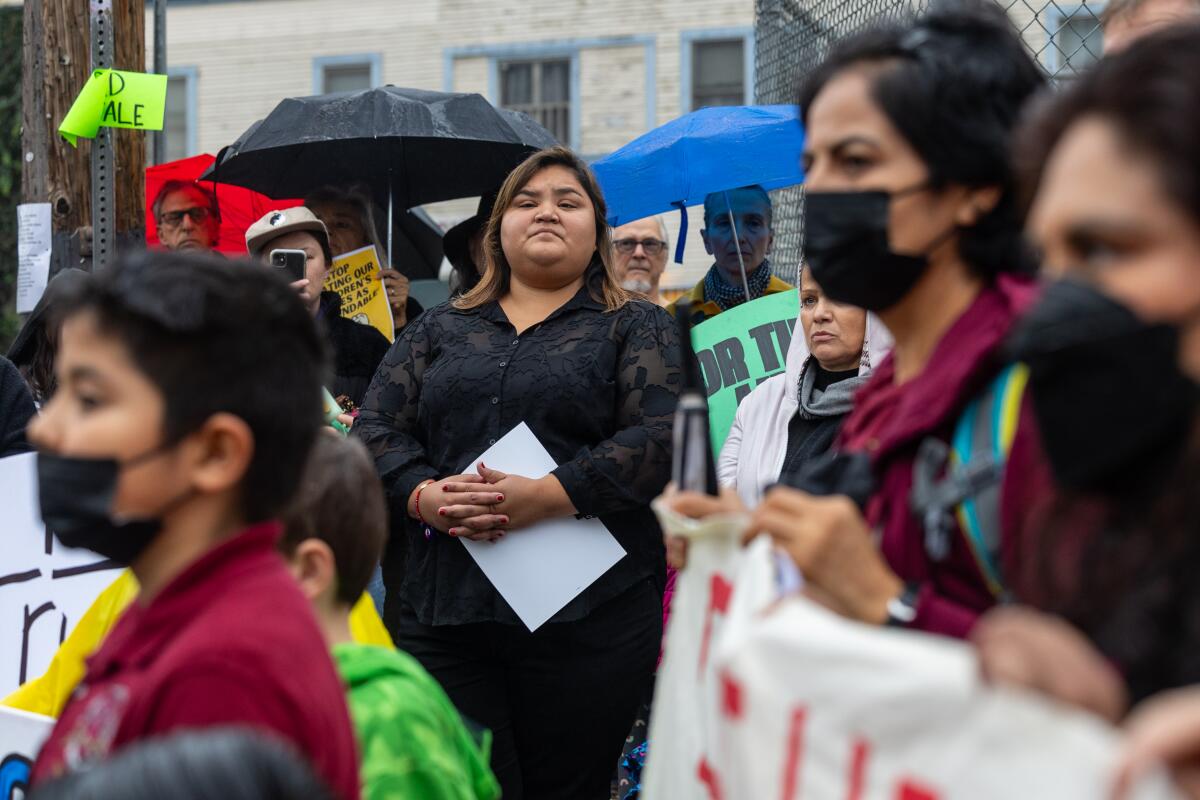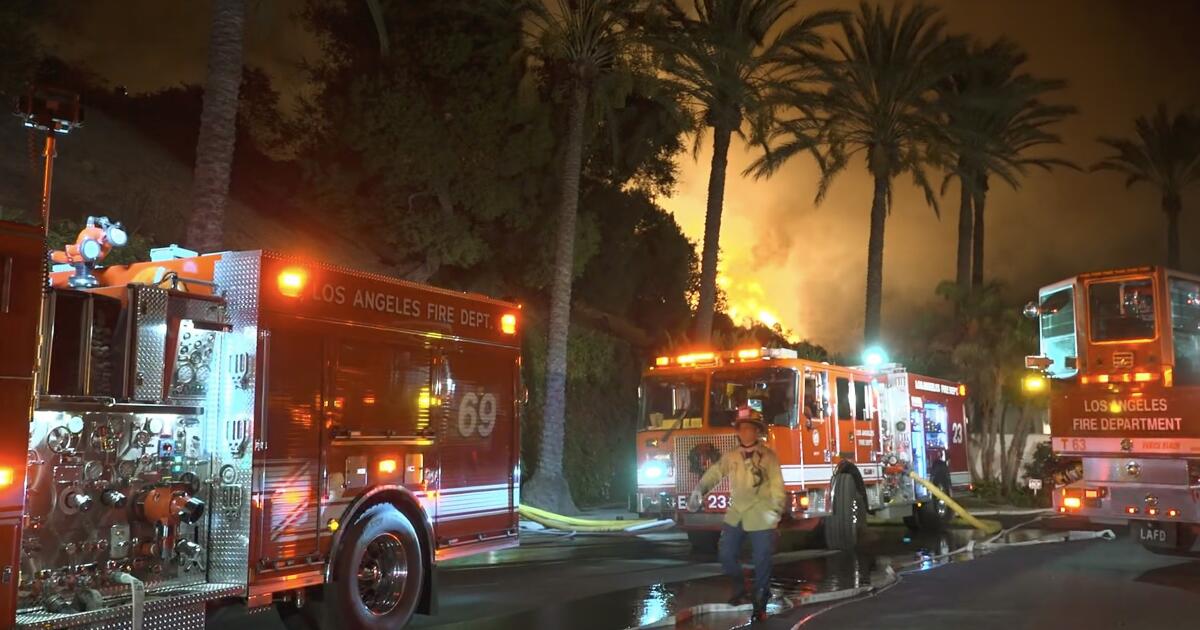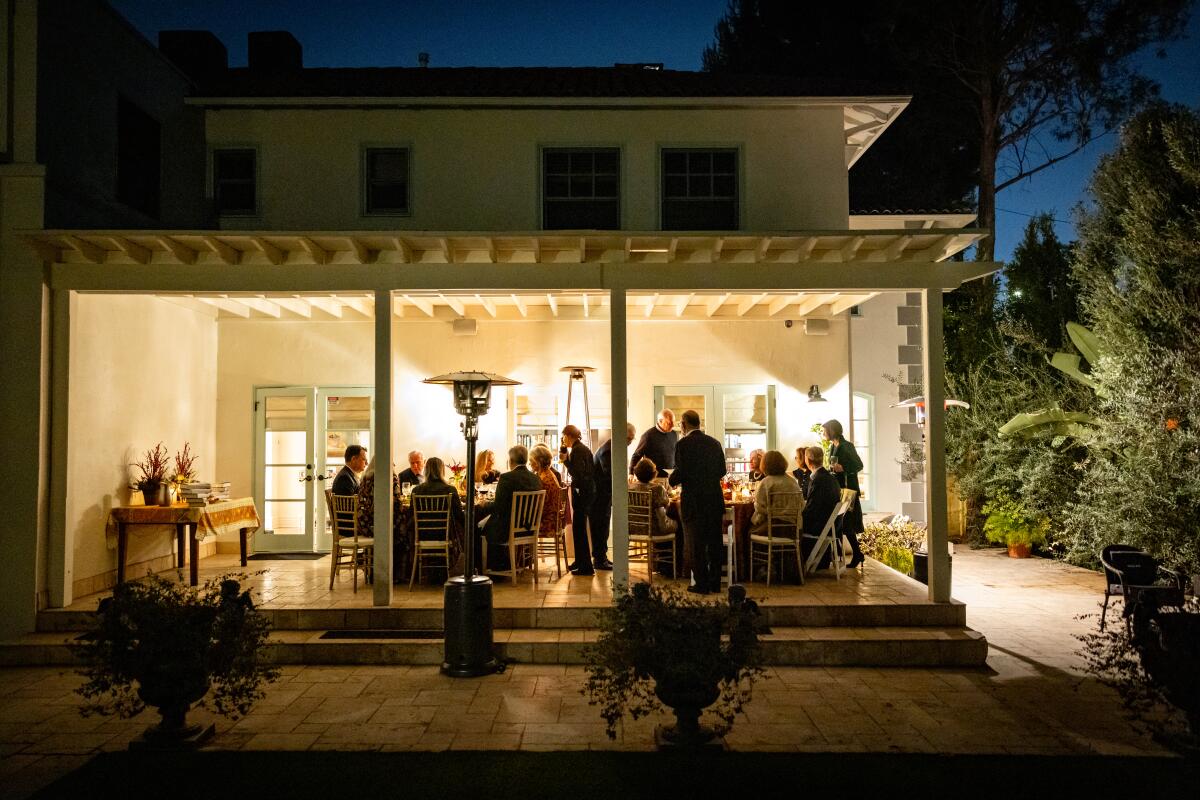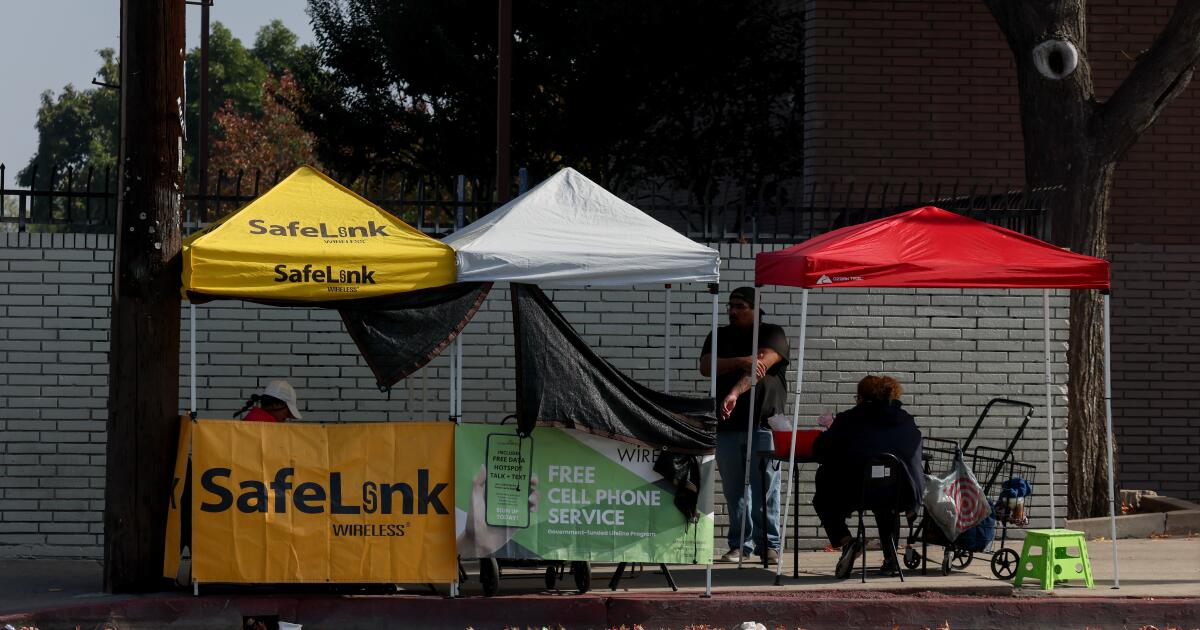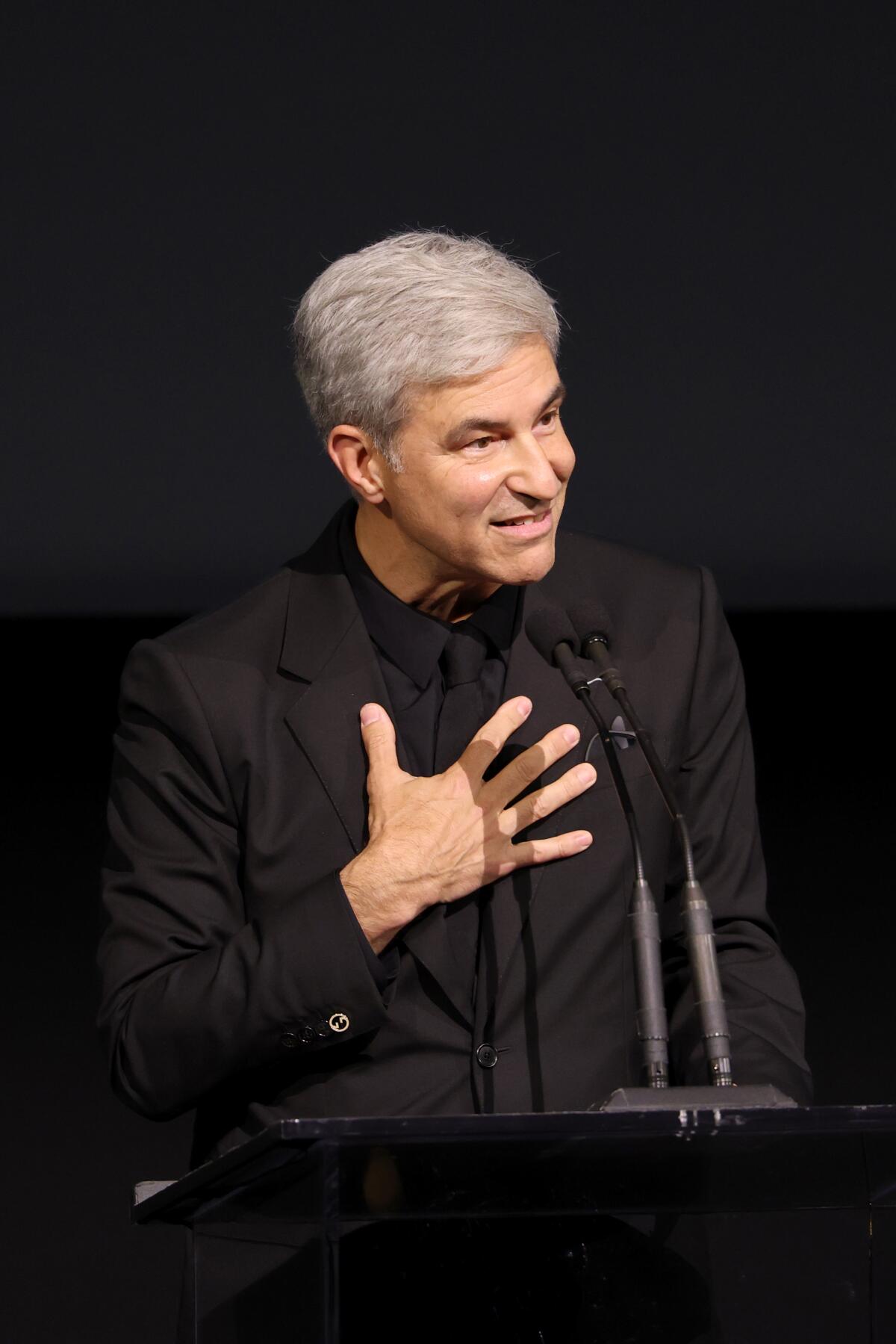From Jack Harris: The celebration had hardly begun, when Shohei Ohtani first voiced the theme of the day.
“I’m already thinking about the third time,” he said in Japanese, standing atop a double-decker bus in downtown Los Angeles with thousands of blue-clad, flag-waving, championship-celebrating Dodgers fans lining the streets around him for the team’s 2025 World Series parade.
Turns out, he wasn’t alone.
Two days removed from a dramatic Game 7 victory that made the Dodgers baseball’s first repeat champion in 25 years, the team rolled through the streets of downtown and into a sold-out rally at Dodger Stadium on Monday already thinking about what lies ahead in 2026.
With three titles in the last six seasons, their modern-day dynasty might now be cemented.
But their goal of adding to this “golden era of Dodger baseball,” as top executive Andrew Friedman has repeatedly called it, is far from over.
“All I have to say to you,” owner and chairman Mark Walter told the 52,703 fans at the team’s stadium rally, “is we’ll be back next year.”
Continue reading here
Photos: World Series champion Dodgers parade through Downtown L.A.
Fernando Valenzuela to be considered for National Baseball Hall of Fame induction
DODGERS POLL
Yoshinobu Yamamoto was the pitching star for the Dodgers, but who would you consider to be the hitting star in the World Series?
Shohei Ohtani, who hit .333 with three doubles, three homers, five RBIs and six runs scored
Will Smith, who hit .267 with two doubles, two homers and a team-leading six RBIs, including the go-ahead homer in the 11th inning of Game 7
Max Muncy, who hit .214 with two homers, including a clutch homer in the eighth inning of Game 7 to bring the Dodgers within one
Miguel Rojas, who only went two for 10 but hit that tying, ninth-inning homer in Game 7
or someone else?
Vote here in our poll and let us know.
LAKERS
From Thuc Nhi Nguyen: After Nick Smith Jr. had scored eight consecutive points, slashing to the rim for a layup followed by two deep threes, Rui Hachimura could tell the 21-year-old guard was going to deliver a big game just when the Lakers needed it.
“Keep going,” Hachimura encouraged Smith during a second-quarter timeout.
Smith did. Straight to the tunnel, where the third-year guard got sick.
With their three biggest stars out, the Lakers literally gutted out a 123-115 win over the Portland Trail Blazers on Monday at Moda Center as Smith fought through an uneasy stomach to notch 25 points and six assists in the Lakers’ fourth consecutive victory.
Smith, playing on a two-way contract with the South Bay Lakers, gave the Lakers (6-2) the perfect substitute off the bench as Luka Doncic (leg) and Austin Reaves (groin) sat out. He delivered electric shooting, making five of six shots from three-point range. With the team’s primary ball-handlers sidelined against an aggressive Portland defense, Smith steadied the offense. He also ignited it with 17 second-half points.
Continue reading here
Lakers box score
NBA standings
CLIPPERS
Bam Adebayo had 25 points and 10 rebounds, Norman Powell added 21 points in his return to Southern California and the Miami Heat held off the Clippers 120-119 on Monday night.
Powell was a key member of the Clippers for three seasons before being traded to the Heat before this season
Andrew Wiggins scored 17 points and Kel’el Ware added 16 to help the Heat end a two-game losing streak and win on the road for the second time in five games. Miami is 1-2 to open a four-game trip.
Continue reading here
Clippers box score
NBA standings
RAMS
From Gary Klein: Puka Nacua returned to the Rams’ lineup in spectacular fashion, catching a touchdown pass, amassing nearly 100 yards receiving and picking up key yardage on a fourth-down jet sweep during a victory over the New Orleans Saints.
But that rushing play, which ended with a crushing hit, came with a cost.
On Monday, Nacua was scheduled to have a scan of his injured ribs, though coach Sean McVay said during a videoconference with reporters that “I feel optimistic … in regard to where we’re potentially heading.”
McVay on Monday said he felt “sick” about leaving Nacua susceptible to injury because of the play call.
“I’m kicking myself about putting him in that spot where he sustained that shot to the ribs,” McVay said
Continue reading here
CHARGERS
From Sam Farmer: A bad situation on the Chargers offensive line just got worse, as the team announced Monday that standout left tackle Joe Alt will undergo season-ending ankle surgery.
Alt, who missed three games earlier in the season because of an ankle injury, re-injured the same ankle during Sunday’s victory at the Tennessee Titans when linebacker Jihad Ward was blocked into the back of his legs.
“Feel bad for Joe,” Chargers coach Jim Harbaugh told reporters. “I know it’s going to be OK. It’s not going to be life-altering. Feel bad for him.”
Continue reading here
UCLA BASKETBALL
From Ben Bolch: It was the sort of postgame rant that Mick Cronin usually saves for a bad loss at a time when he’s trying to swing a season back in the right direction.
This one came after a victory in the season’s first game.
That’s how few positive takeaways there were for UCLA on Monday night on its home court.
Having beaten two quality opponents in exhibition games, the 12th-ranked Bruins struggled mightily in a game that counted against a team from the Big Sky Conference.
Most of the problems came on the defensive end.
“There’s so many mistakes,” Cronin said after his team held on for an 80-74 victory over Eastern Washington at Pauley Pavilion, “I’d like to fire myself for our defense.”
Continue reading here
UCLA box score
————
From Kara Alexander: The No. 3 UCLA women’s basketball team won its first game of the season, defeating feisty San Diego State 77–53 on Monday at the Honda Center.
The Bruins (1–0) built an eight-point lead in the first quarter, but the unranked Aztecs (0–1) managed to cut the deficit by three by the end of the period.
San Diego State struggled to score in the second quarter when UCLA went on a 12–2 run.
The scoring gap continued to increase as the Bruins extended their lead to 15 points, ending the first half with a 37–22 advantage.
Continue reading here
UCLA box score
USC BASKETBALL
From Andrés Soto: For most of Monday night, USC played exactly like a team with 13 new players.
Coach Eric Musselman’s preseason concerns about the Trojans’ offense likely were not abated after USC struggled in the first half of its season opener against Cal Poly San Luis Obispo at Galen Center.
Cal Poly, a mid-major coming off a 16-19 season, wouldn’t let USC run away with the game, with the Trojans clinging to a six-point lead at halftime.
But then sophomore forward Jacob Cofie — one of 10 transfer portal additions — came alive in the second half, notching a 23-point double-double as the Trojans pulled away for a comfortable 94-64 win.
Continue reading here
USC box score
THIS DAY IN SPORTS HISTORY
1934 — The Detroit Lions rush for an NFL-record 426 yards in a 40-7 rout of the Pittsburgh Pirates. The only bright spot for the Pirates is scoring the first touchdown against Detroit this season, ending the Lions’ shutout streak at seven games.
1951 — The U.S. wins six of eight singles matches and ties another to win the Ryder Cup 9½-2½ over Britain at Pinehurst in North Carolina.
1960 — Wilt Chamberlain of Philadelphia scores 44 points and sets an NBA record by missing all 10 of his free throws in the Warriors 136-121 victory the Detroit Pistons.
1984 — Seattle’s Dave Brown returns two interceptions for touchdowns in a 31-17 triumph over the Kansas City Chiefs.
1987 — NBA announces four new franchises; Charlotte and Miami for 1988 and Minneapolis and Orlando for 1989.
1989 — Sunday Silence holds off the late charge by favorite Easy Goer to win the $3 million Breeders’ Cup Classic by a neck at Gulfstream Park.
2000 — R.J. Bowers rushes for 128 yards to become the first player in NCAA history to gain 7,000 yards in his career, leading Grove City past Carnegie Mellon 14-10.
2000 — In the highest scoring Division I-AA game in NCAA history, Ricky Ray passes for 344 yards and three touchdowns and scores three more to lead Sacramento State over Cal State Northridge 64-61.
2006 — Rod Brind’Amour of Carolina scores his 1,000th career point, assisting on a goal in the Hurricanes’ 3-2 win over Ottawa.
2007 — Adrian Peterson runs for an NFL-record 296 yards and three touchdowns in Minnesota’s 35-17 win over San Diego.
2012 — Andrew Luck breaks the NFL’s single-game rookie record by throwing for 433 yards in leading Indianapolis to a 23-20 win over Miami
2016 — Cam Atkinson, Nick Foligno, Scott Hartnell and Josh Anderson score two goals apiece and the Columbus Blue Jackets beat Montreal 10-0, matching the biggest loss in the Canadiens’ storied history.
2017 — Quarterback Ahmad Bradshaw rushes for a career-high 265 yards and Army ends Air Force’s 306-game scoring streak with a 21-0 victory.
2017 — With a 31-24 overtime victory over Nebraska, Northwestern becomes the first Football Bowl Subdivision program to win three consecutive overtime games.
Compiled by the Associated Press
THIS DAY IN BASEBALL HISTORY
1959 — Cubs shortstop Ernie Banks wins his second consecutive NL MVP award.
1976 — Baseball holds its first free agent draft with 24 players from 13 major league clubs participating. Reggie Jackson eventually signs the most lucrative contract of the group, $2.9 million over five years with the New York Yankees. Others free agents are Joe Rudi, Don Gullett, Gene Tenace, Rollie Fingers, Don Baylor, Bobby Grich and Willie McCovey.
2001 — Luis Gonzalez’s RBI single caps a two-run rally off Mariano Rivera in the bottom of the ninth, and the Arizona Diamondbacks win their first championship by beating the New York Yankees 3-2 in Game 7.
2009 — The New York Yankees win the World Series, beating the defending champion Philadelphia Phillies 7-3 in Game 6 behind Hideki Matsui’s record-tying six RBIs.
Compiled by the Associated Press
Until next time…
That concludes today’s newsletter. If you have any feedback, ideas for improvement or things you’d like to see, email me at [email protected]. To get this newsletter in your inbox, click here.




